Jude Knight's Blog, page 154
January 4, 2015
Romance novels as literature
 A tweet from Julie Anne Long pointed me in the direction of an article on Penetrating Analysis, and I’ve now subscribed to the blog. In her description of the blog’s intention, blogger Anne N. Bornschien says:
A tweet from Julie Anne Long pointed me in the direction of an article on Penetrating Analysis, and I’ve now subscribed to the blog. In her description of the blog’s intention, blogger Anne N. Bornschien says:
This space is devoted to mass market romance novels as texts worthy of literary consideration. Approaching them both as an avid reader of the genre and as a scholar of literature, I examine the language, structure, and tropes that mark popular romance. In so doing, I hope to dispel some of the stereotypes that contribute to romance’s marginalization and to share the genre with a broader readership.
The specific article is about why romance as a genre is worthy of study. Along with several other important points, Anne says:
The past five years in particular have given rise to a new crop of novelists whose work hinges upon moral and ethical impediments that defy easy solutions. Unlike in romances predicated upon a misunderstanding (e.g., he wrongly suspects her of infidelity, she thinks he only married her for her money), where once all is revealed all is well, these texts place a dilemma at the heart of the story. They put the couple’s interests or the beloved’s interests in opposition to another person, group, or cause that is very near to the protagonist’s heart. These novels demand sacrifice or creativity of their heroes and heroines in order to arrive at the HEA.



January 3, 2015
Epiphany moments
 Today we celebrated the Feast of the Epiphany (actually 6 January, but the New Zealand bishops have Sundayised most of the liturgical feasts). Just for fun, I went looking for articles about literary epiphanies. You know. Those moments when the character suddenly realises something that changes their whole life from that point forward; often something that has been obvious to the reader for some time. ‘I love her.’ ‘The man is a villain.’ ‘I shouldn’t be here.’ ‘I’m at the top of the ladder and it is against the wrong wall.’
Today we celebrated the Feast of the Epiphany (actually 6 January, but the New Zealand bishops have Sundayised most of the liturgical feasts). Just for fun, I went looking for articles about literary epiphanies. You know. Those moments when the character suddenly realises something that changes their whole life from that point forward; often something that has been obvious to the reader for some time. ‘I love her.’ ‘The man is a villain.’ ‘I shouldn’t be here.’ ‘I’m at the top of the ladder and it is against the wrong wall.’
In Author Magazine, I found a discussion of the difference between epiphanies and character arcs. Epiphanies, the writer says, are:
…moments when a character suddenly realizes something about herself. Those are moments of deep significance in your book because they foreshadow changes in how the character will think and act.
Contrast this to the writer’s definition of a character arc.
A character arc is the cumulative effect of a series of epiphanies. It’s where the character ends up after multiple experiences of increased self-awareness and personal change.
So epiphanies are used to move a character to self-awareness, and therefore need to be built into the plot from the beginning.
An article in the Atlantic points out that self-awareness is hard to achieve, and the clarity of an epiphany moment is often followed by backsliding.
In other words, these conversion experiences don’t stick—or they don’t stick for very long. Human beings have to be re-educated over and over and over again as we swim upstream against our own irrationalities.
Fiction Notes talks about where to put the epiphany (near, but before, during, or after the climax), and six ways that writers get the epiphany wrong. Number 4 particularly irritates me in a story.
“I Haven’t Mentioned This Before, But. . . .” An epiphany has to be a natural outgrowth of the story and not tacked on. Instead build in a cause-effect relationship; the stories events cause the epiphany.
And Just about Write explains the difference between epiphany and revelation. The article starts with the reason for having an epiphany.
Fiction yields a transformed character. Let’s face it. If the protagonist hasn’t changed by the end of the story, it will lack the excitement necessary to keep the reader interested. Without that interest, the reader may want to put the book down and walk away, never to take it up again.



January 2, 2015
Travel times, the growth of London, and other random thoughts
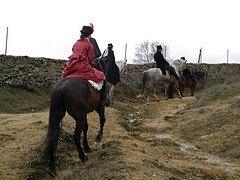 We live in a shrinking world. When we enter the past as writers and readers, we need to remember that earlier generations did not experience such ease of travel, communication, and transport of goods.
We live in a shrinking world. When we enter the past as writers and readers, we need to remember that earlier generations did not experience such ease of travel, communication, and transport of goods.
This has caused me some angst, as my character Rede in Farewell to Kindness travelled across Southern England in the climax to the novel, and I somehow missed a day in my calculations. I needed to rewrite several scenes to get him to where he needed to be just too late to stop the villains in their villainy, but in time to be in for the finish.
I have heaps of notes on travel in the early 19th Century. I can tell you how long it took for the mail coach to travel from London to Bath to Bristol, how long the passenger ships took to sail from London to Margate, how many miles a post horse could cover before being replaced, and the average distance a man and a horse could travel in an hour.
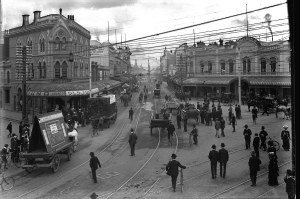 100 years later, things had changed dramatically. I have a package of letters my grandfather wrote to his siblings as the 19th Century was becoming the 20th. He and his brothers travelled for work (they were builders). In those days in New Zealand, travel beyond the local town was by horse, boat, or train. With no telephones, the men wrote home whenever they were away.
100 years later, things had changed dramatically. I have a package of letters my grandfather wrote to his siblings as the 19th Century was becoming the 20th. He and his brothers travelled for work (they were builders). In those days in New Zealand, travel beyond the local town was by horse, boat, or train. With no telephones, the men wrote home whenever they were away.
Even so, they had options for travel and communication that were way beyond those available to earlier generations. Until the eighteenth century, travel was slow, difficult, and expensive. Many people spent their entire lives within walking distance of their birthplace, and those who did travel expected to spend days or weeks on the road or possibly months at sea.
The easy mail my grandparent’s generation took for granted was relatively new at the time; the first penny stamp was used only 60 years before the start of the 20th Century. Before that, those outside the peerage had limited access to cheap mail, and often relied on friends and neighbours to carry messages.
 Transport difficulties limited the size of cities. People need to be fed, and perishable food needed to be grown close enough to a city that it could be brought to the markets while it was still usable. Right through history, societies have collapsed when they grew too large for their hinterland to support them.
Transport difficulties limited the size of cities. People need to be fed, and perishable food needed to be grown close enough to a city that it could be brought to the markets while it was still usable. Right through history, societies have collapsed when they grew too large for their hinterland to support them.
Shipping was one answer to the problem. The great cities of the past were built on harbours, and until very recently indeed, it was faster to sail from port to port than to travel overland. The trip by sea from London to Edinburgh took between five and nine days in the 18th Century (depending on whether), but travel by land took between 10 days and a fortnight. A seat on a coach cost more than two weeks wages for a skilled tradesman, and the traveller would still have to pay for food and lodgings along the way.
 The Georgians began a revolution in travel with the feverish canal-building of the 18th and early 19th century, which added to the much smaller network of canals built in the 1600s. Suddenly, goods could be transported from Liverpool to London by boat, without risking storms at sea. The great London population of explosion followed. In 1800, London was five miles across, and had a population of a million people. By 1815, the population was 1.4 million. By 1860, over 3 million people lived in London — a growth fuelled by easy movement of goods and people on the railways. And the urban sprawl had began, with people living in the suburbs and working in the city.
The Georgians began a revolution in travel with the feverish canal-building of the 18th and early 19th century, which added to the much smaller network of canals built in the 1600s. Suddenly, goods could be transported from Liverpool to London by boat, without risking storms at sea. The great London population of explosion followed. In 1800, London was five miles across, and had a population of a million people. By 1815, the population was 1.4 million. By 1860, over 3 million people lived in London — a growth fuelled by easy movement of goods and people on the railways. And the urban sprawl had began, with people living in the suburbs and working in the city.
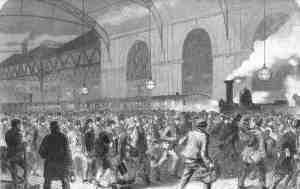 In the same 70 year period, the roads improved, with the introduction of turnpikes providing money and an incentive to apply new road building techniques that could keep up with faster carriages and a greater volume of traffic.
In the same 70 year period, the roads improved, with the introduction of turnpikes providing money and an incentive to apply new road building techniques that could keep up with faster carriages and a greater volume of traffic.
By the time my grandfather was a young man, people could readily travel from town to town around the country and (less readily) from country to country. And the now literate masses could send letters across town in a day and across the world several times a year. The world had grown smaller.
He would find today hard to believe, with cheap world travel within the reach of many, and near-instant around-the-world communication available on cell phones to slum dwellers in India.
It has been a fascinating quarter-millennium. I wonder what’s next?



January 1, 2015
80 years of Regency romance – a tribute to Georgette Heyer
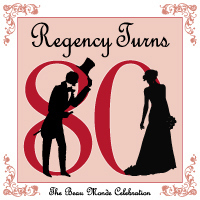
A gorgeous logo designed for the Beau Monde by Mari Christie, who writes Regency novels as Mariane Gabriele
The Beau Monde, the historical fiction chapter of Romance Writers of America, is celebrating and important anniversary this year.
Eighty years ago, in 1935, the very first Regency romance novel went to press. That novel, Regency Buck, was written by Georgette Heyer.
Like many historical romance authors, I was introduced to Regency romance by Georgette Heyer. I own every one of her books (including her mysteries and other historicals – she wrote over 50 books) and I’ve reread them many times. They’re my comfort food when I’m unwell in mind and body. I love her strong-minded females, witty dialogue, and hilarious plot situations.
She conducted meticulous research, though she also had fun inventing slang language and – when the imitators began to copy her – she apparently got a few details wrong on purpose, just to see others follow in her footsteps. Her publisher says:
Georgette Heyer is one of AbeBooks’ top 10 bestselling authors, over the entire history of this company.
Last time we looked, Heyer was behind Shakespeare, C.S. Lewis, Agatha Christie and Stephen King but ahead of J.K. Rowling, Charles Dickens and James Patterson.
The Georgette Heyer fan site says that two of her books have been made into movies (one as a spoof and one in German, but hey). Which leaves plenty of scope for future movie makers.
If it happens, you’ll hear about it first on the Georgette Heyer Facebook page.
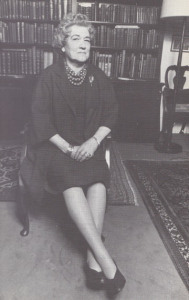
Georgette Heyer in 1970
Here’s a summary of her biography – the start of an extensive Wikipedia article:
Georgette Heyer (16 August 1902 – 4 July 1974) was an English historical romance and detective fiction novelist. Her writing career began in 1921, when she turned a story for her younger brother into the novel The Black Moth. In 1925 Heyer married George Ronald Rougier, a mining engineer. The couple spent several years living in Tanganyika and Macedonia before returning to England in 1929. After her novel These Old Shades became popular despite its release during the General Strike, Heyer determined that publicity was not necessary for good sales. For the rest of her life, she refused to grant interviews, telling a friend: “My private life concerns no one but myself and my family.”[2]
Heyer essentially established the historical romance genre and its subgenre Regency romance. Her Regencies were inspired by Jane Austen, but unlike Austen, who wrote about and for the times in which she lived, Heyer was forced to include copious information about the period so that her readers would understand the setting. To ensure accuracy, Heyer collected reference works and kept detailed notes on all aspects of Regency life. While some critics thought the novels were too detailed, others considered the level of detail to be Heyer’s greatest asset. Her meticulous nature was also evident in her historical novels; Heyer even recreated William the Conqueror’s crossing into England for her novel The Conqueror.
Beginning in 1932, Heyer released one romance novel and one thriller each year. Her husband often provided basic outlines for the plots of her thrillers, leaving Heyer to develop character relationships and dialogue so as to bring the story to life. Although many critics describe Heyer’s detective novels as unoriginal, others such as Nancy Wingate praise them “for their wit and comedy as well as for their well-woven plots”.[3]
Her success was sometimes clouded by problems with tax inspectors and alleged plagiarists. Heyer chose not to file lawsuits against the suspected literary thieves, but tried multiple ways of minimizing her tax liability. Forced to put aside the works she called her “magnum opus” (a trilogy covering the House of Lancaster) to write more commercially successful works, Heyer eventually created a limited liability company to administer the rights to her novels. She was accused several times of providing an overly large salary for herself, and in 1966 she sold the company and the rights to seventeen of her novels to Booker-McConnell. Heyer continued writing until her death in July 1974. At that time, 48 of her novels were still in print; her last book, My Lord John, was published posthumously.



December 31, 2014
A new year, a new novel
 I wrote my first blog post here on 16 September 2014. I’d been working up to it for some time. In 2013, I began researching for Farewell to Kindness and several other novels, and in April 2014 I finally committed the first scene to the keyboard. By the time I set up the website and wrote the first post, I’d written 60,000 words. I was pretty sure I could finish the novel, but I was full of doubts about the path I’d set myself:
I wrote my first blog post here on 16 September 2014. I’d been working up to it for some time. In 2013, I began researching for Farewell to Kindness and several other novels, and in April 2014 I finally committed the first scene to the keyboard. By the time I set up the website and wrote the first post, I’d written 60,000 words. I was pretty sure I could finish the novel, but I was full of doubts about the path I’d set myself:
I feel like the new girl in school.
After all these years growing confident in my profession, I now have a new one. Will I be any good? Will people like what I do?
Since that post, I’ve finished and edited Farewell to Kindness, sent it out to beta readers, and started collating the feedback. I’ve heard back from 12 of the 19 readers, and they have some great ideas for making the draft stronger. I can’t resist sharing some of the compliments.
“…now I can’t wait for the next 2 books! The way you write is refreshing! A lot of books I read are just too obvious. I can figure out the good and bad guys right away and that gets rather tedious. This book, however, kept me guessing, kept me wondering and wanting to find out how it all turns out. ”
“I thoroughly enjoyed this book and I am looking forward to reading more. I am not a huge fan of the romance genre and have struggled (and eventually given up) on other historical romances so I was a bit apprehensive about reading this but there was enough action, intrigue and mystery to keep me interested and the intimate scenes were well placed, made sense to the story and weren’t too abundant (I’m sure some authors are trying to meet a sex quota!).”
“I loved this book. I thought it was well-written and -plotted. In fact I would give it the ultimate accolade – I would pay real money for it.”
I’ve also written, edited, and published a novella, Candle’s Christmas Chair (free through most resellers). On New Year’s Day 2015, at 9am of a New Zealand summer’s morning, more than 6,000 copies of Candle have been downloaded, a number of people have subscribed to my enewsletter, and one has even put all three of the 2015 novels on their ‘to-read’ list at Goodreads.
(By the way, if you want to keep up with my release information, please subscribe to the newsletter. I won’t send it often; just when I have news about a forthcoming publication.)
So here’s the plan for 2015.
April: Farewell to Kindness – I’ll start the final edit tomorrow.
September: Encouraging Prudence – I’ve finished the plotting and character sketches, and this morning I’ve written the first 650 words.
December: A Raging Madness – still developing the plot and writing the character sketches. And researching Cheshire and the canal system that brought goods all the way from Liverpool to London.
With beta readers by mid-November for release in 2016: Lord Danwood’s Dilemma – just making the occasional note as I come across relevant facts or visual inspiration.
I’ll continue doing a daily blog post.
And I’ve joined a small group of other indie authors; we’re planning a combined release for next Christmas. More news about this as our plans solidify.
Other ideas are still fluid, but one thing is for certain. 2015 is the year I finally earn the right to call myself a novelist. Yay!
And beyond 2015? Here’s a chart of my planned novels, colour coded by series. I’m working through them more or less in date order.
Happy New Year, all. What are your plans for 2015?



December 30, 2014
Happy New Year
 In just over half a day New Zealand time, we’ll be into 2015.
In just over half a day New Zealand time, we’ll be into 2015.
Our family does not tend to make a big fuss of New Year’s Day. It has always seemed an arbitrary distinction to me: one year out and one year in. A tiny bit of research shows how arbitrary it is.
For a start, New Year’s Day is a different day in different cultures. You already knew that. The Chinese celebrate New Year around a month later (the precise date depending on movements of the sun and moon). In parts of India, New Year is over three months later, and is celebrated as a Spring festival. In other parts of India, the date is set by a legend:
When Prince Rama, rightful heir to his father’s throne, was banished to the forest for 14 years by his wicked stepmother, Rama’s wife was kidnapped by the evil Demon King Ravan, ruler of a neighboring land. A battle ensued and Rama, aided by the monkey warrior Hanuma, rescued his wife, defeated Ravan and returned to his kingdom to reclaim his throne. In celebration of Rama’s victory, people feasted and lit oil lamps in their homes. Such was the first Indian New Year celebration known as Diwali, meaning “Row of Lights.”
Today, the festival falls in late October or early November and is celebrated according to regional customs. In Northern India, for example, every town and village glows with thousands of lights and homes are decorated with little oil lamps called diwa, intended to drive out evil and replace it with goodness. People try to complete any unfinished work since Diwali marks the end of the year. Businesses pay off all debts and new account books are blessed before the New Year. People buy new things for their homes, or purchase new tools or even new clothes. Cards and gifts are exchanged, New Year resolutions are made and all quarrels are forgiven and forgotten, since this is a time of year to be happy and generous. Even the animals who have been worked are washed, groomed and decorated for the festival.
The Normans also celebrated New Year as a Spring festival, in March. 25 March (or Lady’s Day) continued to be regarded by some in England as the start of the New Year until the Calendar Act of 1751. In fact, accountancy being a conservative breed, 31 March is still the end of one year and 1 April the start of another for many commercial organisations — at least for tax and accounting purposes.
On the other hand, the Celts put their New Year a lot earlier, at the festival of Samhain, or Summer’s End (in October). And Rosh Hashanah, the Jewish New Year, is usually in September, though it can be as late as early October.
The Scots had been starting their New Year on 1 January since 1600, so when King James VI of Scotland became James I of England, many people began following the Scots timing. Which means sorting out what happened in which year can be interesting. “For example, in The Tower of London there is some graffiti scratched into a cell wall by someone imprisoned in January 1642 for his role in the Battle of Edgehill (which took place on 23 October 1642).” [Andrew Benham on Calendar Reform]
And I’ve already mentioned before on this blog that the liturgical year in the Western Christian churches begins on the 1st Sunday of Advent at the end of November or the beginning of December.
So how was New Year celebrated in my favourite period, just 50 years after an Act of Parliament placed it firmly on 1 January?
To start with, the Roman custom of giving gifts on 1 January had been revived in England in 1200 (by a king who wanted some). So our late Georgian era ladies and gentleman might have exchanged presents on this day, rather than on 6 December (St Nicholas Day), 25 December, or 6 January (the Feast of the Epiphany). Perhaps they might do all four?
Some began the celebration the night before, and stood around the door as midnight approached, ready to sweep out the old and welcome in the new. In the north, the practice of first footing meant waiting for the first guest to cross the doorstep. A tall dark-haired man with a high instep was good luck for the year. Someone with flat feet was bad luck. In different places, lighter hair colours and women might be bad luck or good.
According to the first footing tradition, the first footer entered through the front door, wished everyone well for the year, and left through the back door taking any bad luck left from the old year with them.
An article in the Huffington Post suggests that new year resolutions were an 18th Century Protestant response (possibly Methodist) to pagan New Year practices.
I don’t have new year resolutions, but I do have plans. On the fiction side, I have three novels to be published (one in April, one in September, and one in December), novellas and short stories to write, and a community of writers and readers to enjoy connecting with. My local community is facing a time of change, and I’ve agreed to be part of the leadership team. On the commercial writing side, I’m starting several projects with a client in Australia, which could lead to more Australasian work, and I’m contributing to the development of several new workshops. And, of course, family (especially my PRH) will come first in my priority list.
What are you planning for 2015?



December 29, 2014
Adventures in self-publishing
 I’m now officially an indie publisher of historical romance. Candle’s Christmas Chair hit the e-shelves a fortnight ago today, and has since been downloaded more than 4,500 times. (I’m hoping for 5,000 by 6pm this evening, in 7 hours time, because I really like round numbers.)
I’m now officially an indie publisher of historical romance. Candle’s Christmas Chair hit the e-shelves a fortnight ago today, and has since been downloaded more than 4,500 times. (I’m hoping for 5,000 by 6pm this evening, in 7 hours time, because I really like round numbers.)
And, yes, I’ve reached those figures because the book is free (or 99c to some Amazon buyers, but Amazon has been very responsive in making it free to US purchasers when I asked them to do so).
So why am I giving Candle away? In a post a couple of months ago, I commented that, to sell, I needed to write a good book and I needed to be noticed by people who wanted to buy it. By delivering a free novella three months before I release my first novel, I give readers the chance to see whether they like the way I write for the investment of a couple of hours of their time. And I make it easy for them to share their pleasure in the book (if, indeed, they like it) with other people.
In theory, this should help sales of Farewell to Kindness, which will go on pre-release at the special price of 99c on 1 March (and up to $3.49 a week after its April release date).
So, to quote the man I adore: “What have you learned from this experience?” (Not, incidentally, what you want to hear when you’ve just bumped your toe or broken your heart. But I love you, darling.)
I still have a great deal to learn, but here are my top five lessons from this first venture into the wild and wonderful world of Indie.
Lesson 1: Romance writers are a wonderfully generous and supportive community
Since joining various Facebook groups for Historical Romantic Fiction, I’ve ‘met’ many wonderful authors. My to-read list has expanded at an alarming rate, but I’ve also been privileged to share their insights, tidbits from their research, and their encouragement as I’ve dipped my toes into the indie publishing water. Without their retweeting and sharing, far fewer people would have heard of Candle’s Christmas Chair.
I particularly want to thank Helen Hollick for organising the Christmas Party blog hop at which I officially launched the novella (with a little prequel story), and the other 24 great authors who joined the blog hop and enthusiastically promoted it on Facebook and Twitter. If you haven’t read their blog hop stories and posts, please do so.
And huge thanks, too, to Mari Christie, who featured Candle on her blog. Explore her website, folks. She has some very thoughtful articles about indie publishing. And, as Mariane Gabrielle, she is the writer of Royal Regard, which is a lovely book.
Three of the people on a Facebook Group volunteered as beta readers, and gave me great feedback (and seven are beta reading Farewell to Kindness). Thank you, all.
And I’ve had some generous reviews on Goodreads, Scribd, and Amazon from some of the online community.
Lesson 2: 20 December is a terrible date to launch a new book
The 1st; maybe the 10th; maybe the 30th.
The 20th was a really, really, bad idea, and very nearly did me in. So many competing demands. We have a habit of giving the grandchildren a craft day, and this year we did two (one full Saturday for the older children, and one for the younger). I work full-time in commercial publishing, and 30 years of experience should have taught me that clients pile on the deadlines in the three weeks leading up to Christmas and the New Zealand summer holidays. And that doesn’t even begin to touch on Christmas shopping and baking.
I’m indie publishing, and this was my first book. I didn’t have money to employ specialists, so I did all my own editing, cover design, proofreading, formatting, marketing, and so on. The week leading up to 20 December was insane, and the next week, as I publicised the book, even crazier. And that week included Christmas Day.
Let’s not do that again, okay?
Lesson 3: Don’t leave the cover till the last week
I’ve done a lot of research on covers, and looked at hundreds trying to work out what I like and what I don’t. I downloaded Pixelmator for the Mac, and my PRH transferred across a heap of fonts from the ancient version of InDesign on our old publishing company’s computer. We experimented with fonts till we found some we liked. But –with final tweaks on the image — the cover I actually used wasn’t completely ready until 12 December, just a couple of days before I uploaded to Smashwords and Amazon.
Okay. Not my fault. I started working on the cover the week I started writing the novella, but I had huge troubles finding the right images. Thanks to a chance conversation on my commuter train, I met the delightful Britt Leveridge, who drew the chair for me, and delivered the day before I needed to put the book on Smashwords.
More pressure than I needed. I’m currently writing an artist’s and photographer’s brief for Farewell to Kindness (the one I have is just a place holder), and aim to have it done and ready to go by mid-February.
Lesson 4: Distribution takes time – preorder is the way to go
I uploaded on 16 December my time. The book began to be downloaded from Smashwords straight away. Somehow, I’d managed not to take that into my calculations, but hey — a download is a download, right? It took several days to filter through to the resellers from Smashwords. Apple finally started showing the book on 27 December, and didn’t really pick up speed for several days. As of today, it seems to be shifting around 100 books a day. Kobo don’t seem to have Candle yet, but I’m watching out for it.
Amazon started selling immediately, too, but didn’t really begin to move until they made it free (see Ask for what you want, next).
I didn’t have the option of preorder for Candle, since I was planning to give it away (and, in any case, it wasn’t ready till the last minute). But I’ll definitely lighten my stress load by putting Farewell to Kindness up for preorder five weeks before release. That’ll mean it is in all the stores and ready to go on release day.
Lesson 5: Ask for what you want; it’s less stressful than waiting
Ask for reviews. Ask for ratings. People can say ‘no’. But you lose nothing by asking. One thing I asked for was a free listing on Amazon. I’d been told that Amazon would price match, and that I should ask people to request price matching. So I did. And nothing happened. I read discussions on forums where authors talked about how hard it was to get price matching. But then I thought ‘why not ask’?
So I emailed Amazon, told them that the novella was free at Apple and Barnes & Noble, that my strategy was to give it away free to publicise the next few books, and that — if they price matched — we’d both benefit in the long term. Within 24 hours, it was free on Amazon to US purchasers, and they’ve since distributed over 2000 copies (at the time of writing). I’ve been either 2 or 3 on their free bestseller Historical fiction > regency list for over 48 hours.
So ask. People just might say ‘yes’.



December 28, 2014
First kiss scene from Farewell to Kindness
The heroine is staying at the hero’s house. When she cannot sleep, she goes to check on the rest of her family, and meets him in the darkened hall. He invites her to sit with him in the old Minstrel’s Gallery.
 Rede set the tray down, and took the candleholder from her to light candles in a candelabra that sat with others on a shelf just inside the door.
Rede set the tray down, and took the candleholder from her to light candles in a candelabra that sat with others on a shelf just inside the door.
The room was not more than eight feet from where they had entered to the opposite wall, but stretched out to her left for an indeterminable distance. The near corner of the room was lit by the candelabra Rede set on the small table where he’d set the tray. Within the circle of light was the opposite wall, only a few feet high, letting out onto a dark void.
“It looks out over the Great Hall,” Rede told her, motioning to a chair.
Anne sat. She really should not be alone with him. She was sure Ruth and Hannah would advise her to beg a candle and take herself to bed. Alone. Of course, alone.
 Rede broke into her thoughts. “Your sister seems very excited about the Assembly.” He passed her the drink he had poured.
Rede broke into her thoughts. “Your sister seems very excited about the Assembly.” He passed her the drink he had poured.
She smiled, fondly. “It is a great opportunity for her.” She took a sip, and blinked rapidly.
“What is this? It is very…” She paused, trying to find words to describe how it tasted.
“Your first brandy? Don’t drink it yet. Cup the glass with your hands so that the drink warms.”
He followed his own advice, bending his head to inhale the smell from the glass as he held it in both hands.
Anne, with most of her attention on copying him, said, “It has been hard for her when the other girls are talking about coming out; knowing that she must wait.”
He tipped his head to the side and raised his brow. “You plan a come out for her, then?”
“Just in Bath. Or perhaps Cheltenham? Not this year, though. We hope for next year, but the year after is more likely.”
“She is young yet. You have time enough, surely.”
Anne shook her head. “She is already 18. But she is very lovely. I am certain that she will ‘take’.”
“Ah. You are seeking a husband for her, then.” Rede sounded as if he disapproved.
“Should I not? Someone to love her; someone she can love. And children. She would make a wonderful mother, I think.”
“Wealth and title, I suppose.” He kept his voice neutral, but she could sense the sneer. What right had he to make assumptions and then sneer?
She refused to rise to his baiting.
“A competence is a useful thing for a couple starting life together. I would not like her to be poor. Wealth, however, is not necessary to happiness, in my view.” No need to tell Rede that Kitty would bring wealth enough to any marriage. Indeed, if she could, Anne would like to keep that information from Kitty’s putative suitors.
Rede inclined his head, making no comment.
“I do not hope for a title. Quite the contrary. Those peers I have met are, on the whole, arrogant and self-centred.” She swirled her brandy, absently. The amber liquid glowed where it caught the light. “I dare say it is not their fault. They are raised to think the world owes them respect, and make no effort to be worthy of it. I cannot think such a man would make my Kitty happy.”
“Ouch,” Rede murmured.
She raised her eyes to his, suddenly realising how her diatribe sounded. “Oh, Rede. I did not mean you. You have been everything kind.” Flustered, she sought to change the subject.
“That is an unusual shawl.” In the better light, she could see it was striped, with the occasional broad red stripe and the other stripes woven blue and white, red and white, and yellow and white. The long knotted fringe swung as he moved his legs, twisting slightly as he looked down.
 “My ceinture flechée? Yes, there can’t be many of them in England. My wife’s people make them.” He ran his hand over it where it fell from the knot around his waist. “Marie Joséphe made this one for me. These are her family’s colours.”
“My ceinture flechée? Yes, there can’t be many of them in England. My wife’s people make them.” He ran his hand over it where it fell from the knot around his waist. “Marie Joséphe made this one for me. These are her family’s colours.”
“Marie Joséphe was your wife.”
“Hmm, yes.” He was focused on the shawl.
“What did you call it? Ceinture flechée? Arrow sash?”
“For the pattern. I think your brandy may be ready to drink.”
Anne started to lift it to her mouth.
“No. Wait,” Rede said. “Swirl, sniff, and then sip. Here; let me show you.” He leant forward and cupped his hand around the glass over hers.
“Swirl.” He moved her hand gently in a small tight circle.
“Sniff.” He held the glass several inches from her nose and again swirled it slightly, then shifted it closer.
“Now sip. Just a small amount, slowly. Let it slide over your tongue.”
Anne followed his directions, not taking her eyes off Rede. This time, the brandy seemed a lot smoother. The flavour filled her mouth, the fiery liquid warmed her throat.
Rede had not removed his hands, and now he leaned forward still further, his eyes holding her motionless.
He came closer and closer, slowly. He would stop if she protested. She should protest. She would not.
 The first brush of his lips on hers was brief, and light as a feather. He drew back enough to look into her eyes, then leaned in again. This time, his lips landed and stayed, moulding to the shape of her mouth. After a moment, he began to move, cruising along her upper lip with tiny pecks and then along the lower. He settled again, this time his mouth slightly open. Was that his tongue, sliding along her lips? How odd. How… pleasant.
The first brush of his lips on hers was brief, and light as a feather. He drew back enough to look into her eyes, then leaned in again. This time, his lips landed and stayed, moulding to the shape of her mouth. After a moment, he began to move, cruising along her upper lip with tiny pecks and then along the lower. He settled again, this time his mouth slightly open. Was that his tongue, sliding along her lips? How odd. How… pleasant.
She opened her own lips, and was rewarded with a hum of approval before he dipped his tongue into her mouth. Tentatively she touched his tongue with her own, which sent a tingle down through her breasts to her belly.
He hummed again, this time almost a moan.
So he liked that, did he?



December 27, 2014
Is your trumpeter on holiday?
My mother’s family were old school. Raised during the Great Depression, and tempered by the Second World War, they thought children should be obedient and humble. I grew up with comments designed to help me shrink when I was ‘getting too big for her boots’ or ‘getting a swollen head’, and I was frequently advised that I should not blow my own trumpet.
Well, my darling aunts and uncles, I love you all, but I’m going to share with everyone the latest on Candle. (And, yes, I know that if you were alive you’d make a cutting remark and then go and tell all the neighbours.)
So here it is, folks. Candle’s Christmas Chair, number 2 on Amazon’s Bestseller List for Free Historical Fiction > Regency







